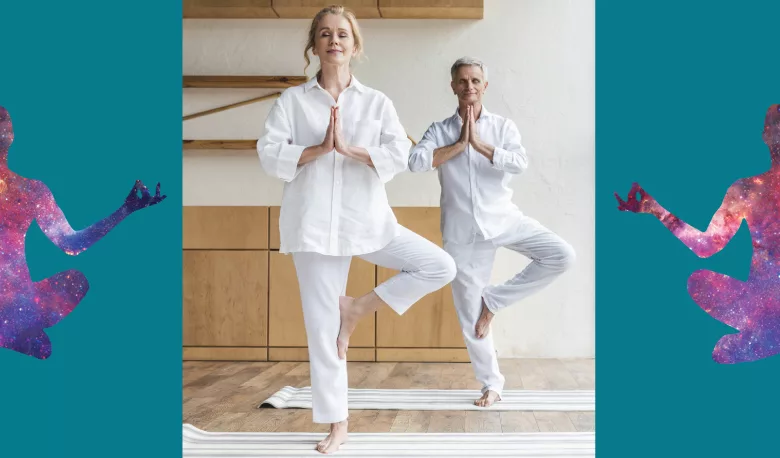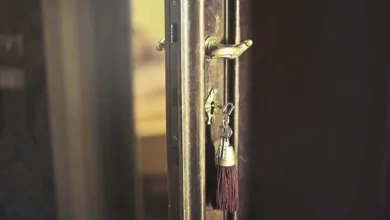You Can Improve Your Balance—Through Failure!

Which is better — maintaining your balance in a standing yoga pose or falling out of it? Silly question, right? But the truth is, mindfully trying to get back into a pose after falling out is one important way to build neural connections that strengthen brain-muscle communication. In other words, re-trying the pose helps to build neural pathways that train your body and brain to work together so you can balance better in any situation.
Standing balancing poses also build strength in the muscles and bones of your feet, ankles, legs, hips and core muscles, all critical for maintaining balance and avoiding falls. As you take it slow and easy, avoiding concern about performance, balancing helps to calm your mind and relax your nervous system.
You don’t have to go to a yoga class to try balancing poses. In fact, practicing at home gives you the flexibility to use supports that are already around you — a wall, a chair or another piece of furniture. If you feel a bit unsteady keep one hand on a support until you can challenge yourself to release it. It’s not cheating — as long as you’re not leaning into the hand, which could have the unintended effect of leaving your core muscles out of the picture. The more you practice, the more confidence you will have for going hands-free.
To prepare for a standing balancing pose:
- Stand tall, knees soft (not locked).
- Spread your toes apart and focus on the feeling of your feet grounded to the earth.
- Lift your chest and firmly draw your belly in.
- Take a couple of deep, slow breaths through the nose.
Tree Pose:
You can try virtually any balancing pose at home, but Tree Pose is a favorite place to start.
- Prepare as above.
- Start with both hands at your heart in prayer, or have one hand lightly touching a chair or wall.
- Keeping your belly taut, shift your weight to one leg and draw the other foot to the standing leg’s calf or thigh.
- To practice an easier version, instead of bringing your foot to the opposite leg, just stay on the ball of that foot and prop the heel against the lower part of your standing leg.
- When you are ready, slowly lift your arms. Hold the pose for at least 10 slow breaths.
- When you come down, briefly shift the weight from one leg to the other, then stand tall again to repeat on the other side.
Just remember, as in all of life, falling out is normal. But trying again…well, that’s when the benefits begin.






